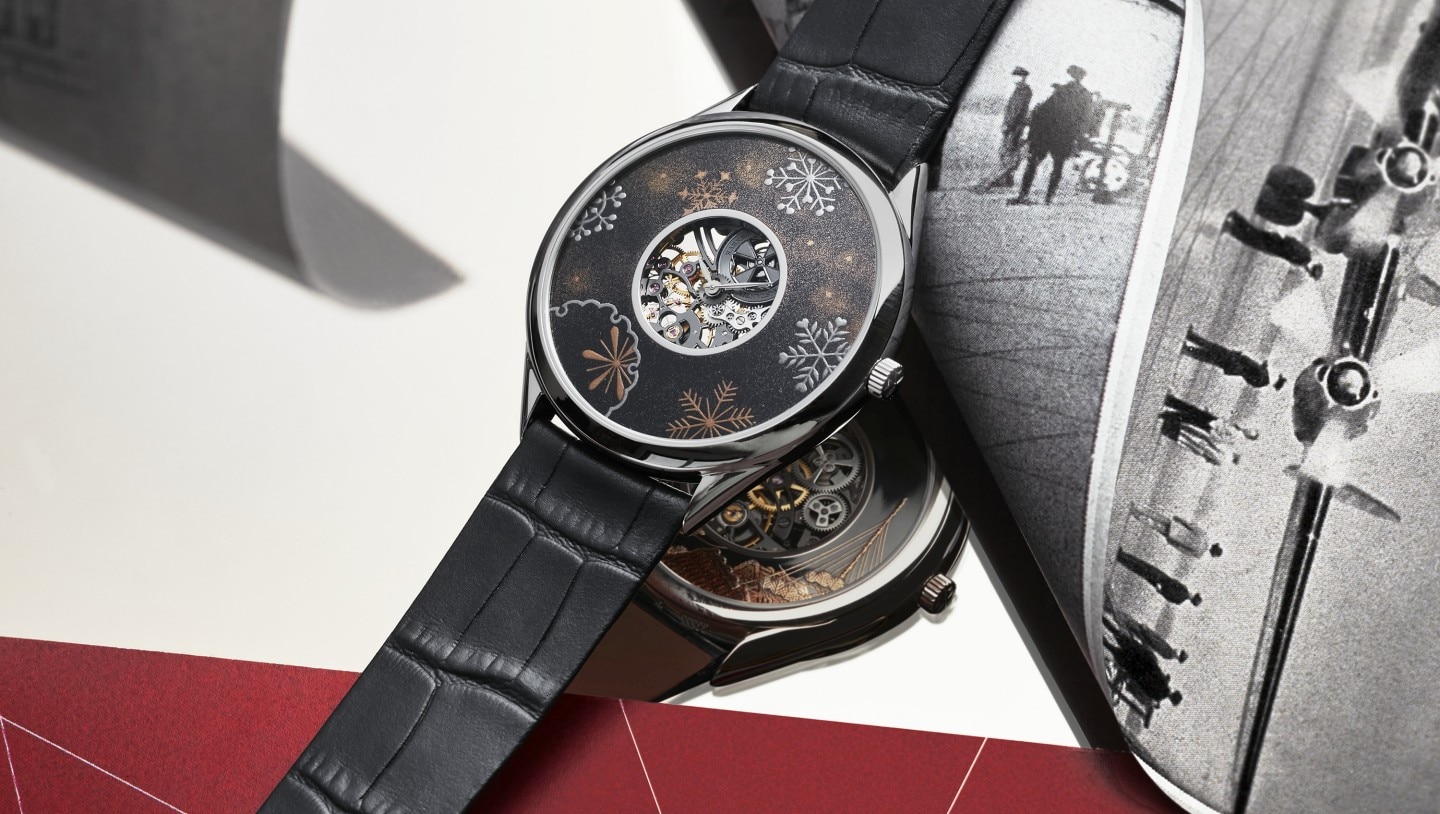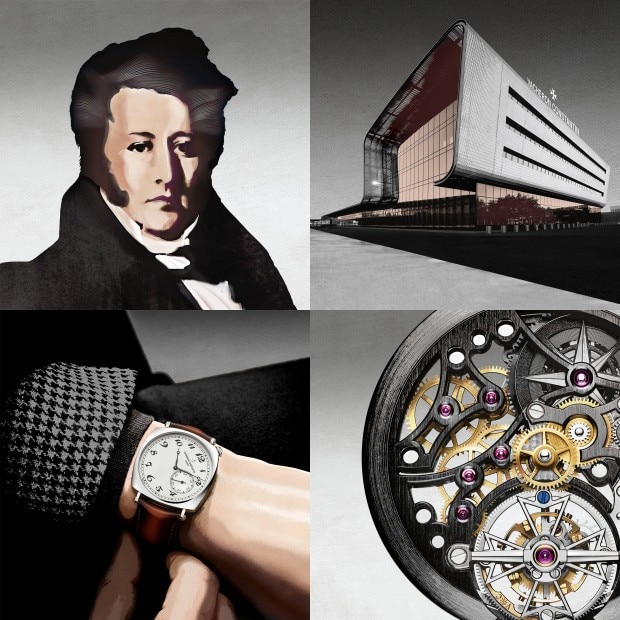Founded in 1755, Vacheron Constantin holds the title of oldest watch manufacturer with an uninterrupted production history. That’s 270 years of expertise, creativity and watchmaking creations. Combining tradition and innovation, this rich heritage includes numerous timepieces and calibres that have made their mark on successive eras.
Excellence above all
Beyond simply telling users the time, Vacheron Constantin has always been committed to blending timeless traditions with cutting-edge innovation and combining masterful watchmaking with exquisite design. The Manufacture has spent 270 years perfecting its crafts to ensure every timepiece is a masterpiece.
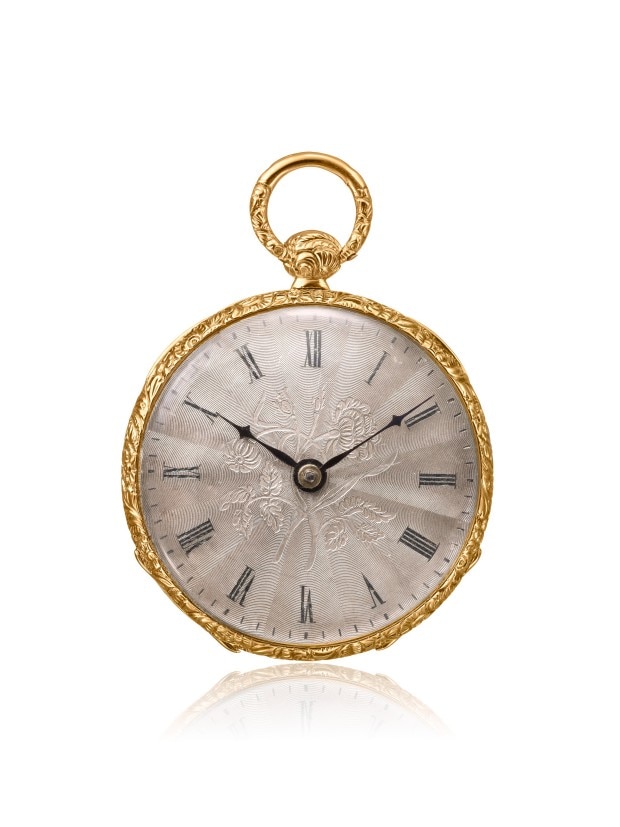
270 years of Belle Haute Horlogerie
Guilloché work has always been a signature element of the Maison's design philosophy.
This pocket watch from 1780 is the oldest in the Maison's private collection to feature the delicate technique on its dial and case.
Engraved and guilloché yellow gold pocket watch, stamped and guilloché silver dial - 1780
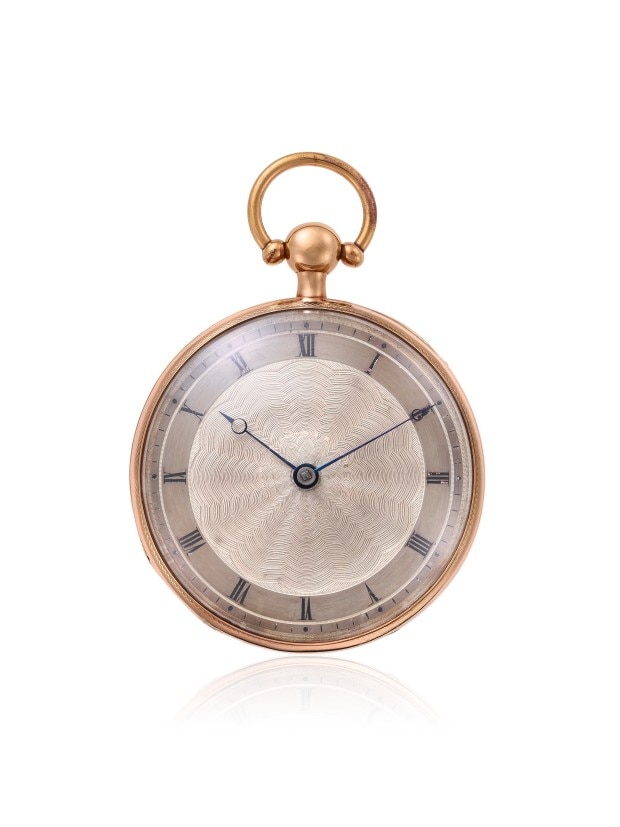
270 years of creativity and innovation
Combining mechanical science and acoustics, chiming watches were developed around the turn of the 18th century to tell time in the dark. They’re an integral part of Vacheron Constantin's heritage.
This quarter-repeater pocket watch demonstrates Vacheron Constantin’s mastery of complicated timepieces and craftsmanship. Note the guilloché dial’s decoration, which is commensurate with the piece’s mechanical complexity.
Guilloché pink gold quarter-repeater pocket watch, brushed and guilloché silver dial – 1817
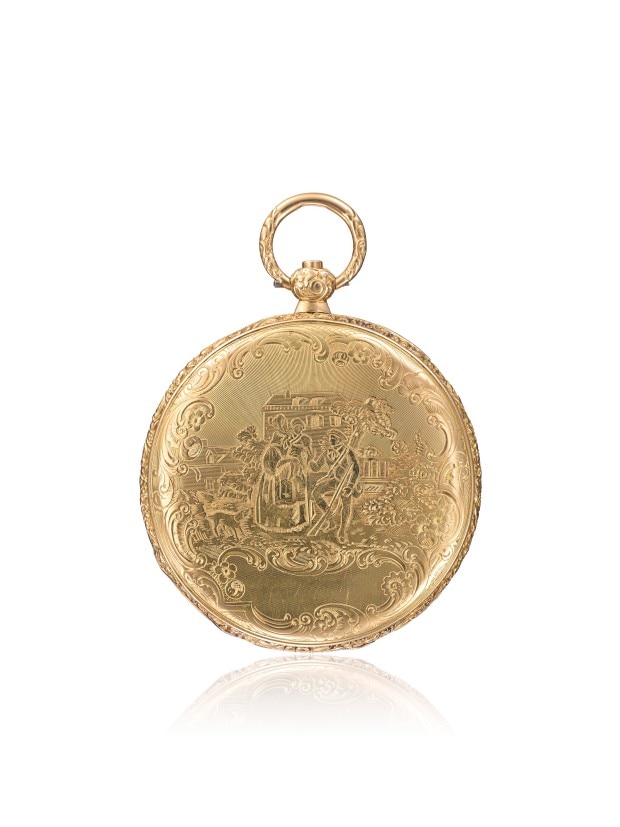
270 years of artistic crafts
From the very first, Vacheron Constantin devoted considerable attention to artistic crafts, with the aim of offering timepieces as visually appealing as they were technically impeccable.
Hunter-type pocket watches provided a special field of expression for craftsmen proficient in the art of engraving, guilloché, enamelling or gemsetting.
Engraved yellow gold hunter-type pocket watch, engraved and guilloché silver dial – 1819

270 years of technicity
The first mention of a date-function pocket watch goes back to the early years of the workshop founded by Jean-Marc Vacheron in 1755. A few decades later, the range of complications would expand under the leadership of Jean-Marc's son, Abraham Vacheron.
This 1824 pocket watch is one of the first to feature a date hand on its white enamel dial punctuated by 12 Arabic numerals with an external minutes track.
Guilloché yellow gold pocket watch with winding key, enamel dial – 1824
Guardian of artistic crafts
Vacheron Constantin’s horological expertise flourishes through its constant quest for artistic beauty. Since its founding, the Maison has embraced artistic crafts and their evolution alongside stylistic and design trends, integrating gemsetting, guilloché, enamelling and engraving into the Maison’s creative DNA.
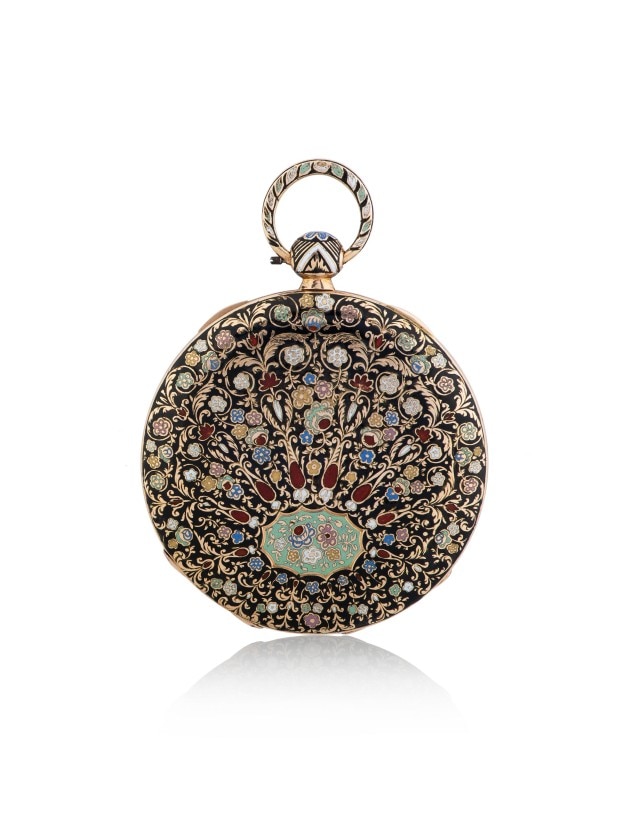
Enamelling
The art of enamelling requires depositing vitreous powders with a fine brush on a metal base (copper, silver or gold). Thin layers of these pigments are successively fired to fix the colours. From the 16th century onwards, watchmakers adopted various enamelling techniques to create luminous works of art. Although vulnerable to impacts, enamel is an almost unalterable material whose vivid colours make it particularly precious for ornamenting watches.
Pocket watch with jumping hours in yellow gold with champlevé enamel, guilloché silver dial – 1829
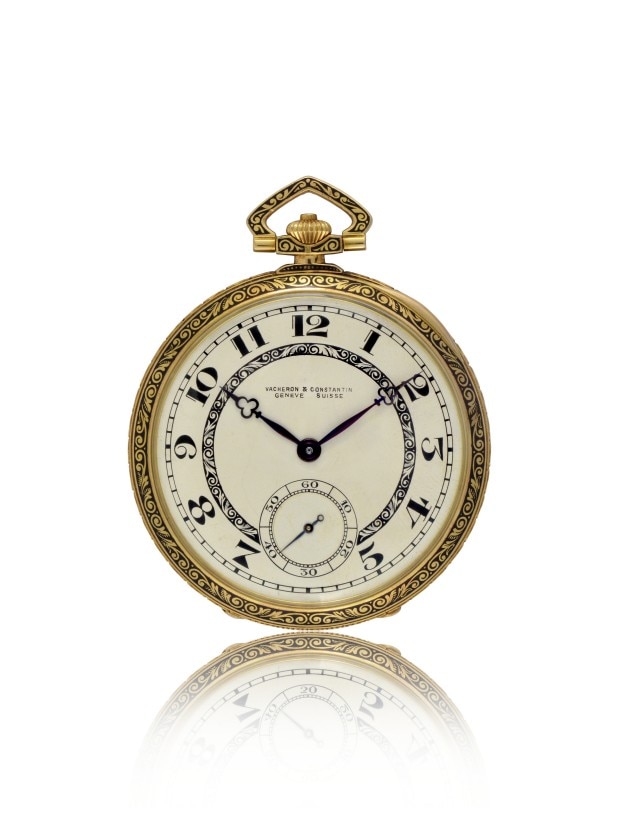
Engraving
While engraving on watches originally served to reduce glinting , this art has since enabled an infinite variety of decorations on all parts of the watch using relief or intaglio techniques, chamfered and polished by hand. Engraving is often combined with other artistic crafts such as gem setting, guilloché and enamelling.
This 1922 piece belongs to the grand tradition of engraved watches from the late 18th century, a true golden age for engravers. A line-engraved arabesque motif of leaves covers the caseback, while an enamelled frieze adorns the rim.
Engraved and enamelled yellow gold pocket watch – 1922
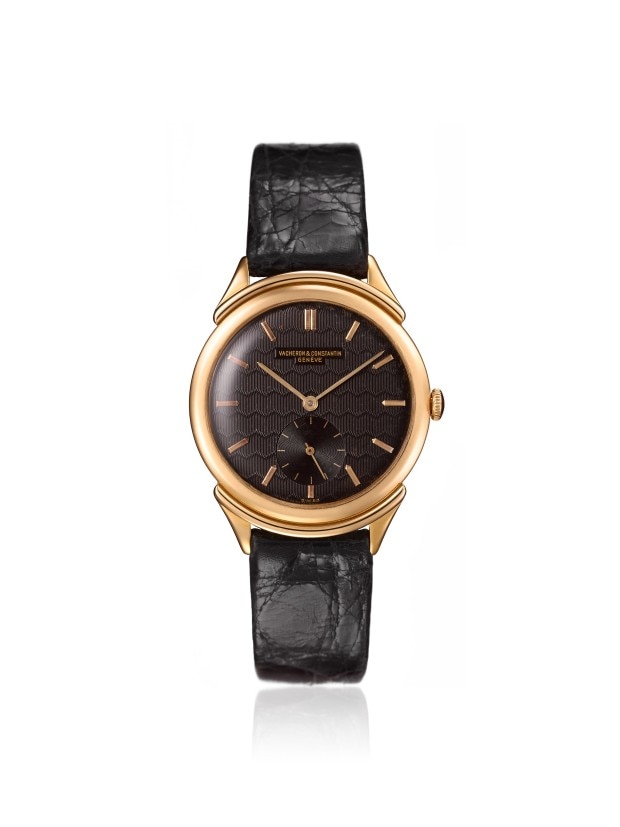
Guilloché work
Guilloché work, or guillochage, involves the removal of material to engrave non-figurative, often repetitive motifs. The regularity and abstraction of these patterns distinguish guilloché from figurative engraving and are still produced by hand using special engines. Vacheron Constantin's master guillochage craftsmen work with vintage machines, some dating back to the 19th century.
This yellow gold watch has a classic watchmaking look with its finely guilloché black dial and double-bevelled bezel.
Yellow gold watch, black guilloché dial – 1953
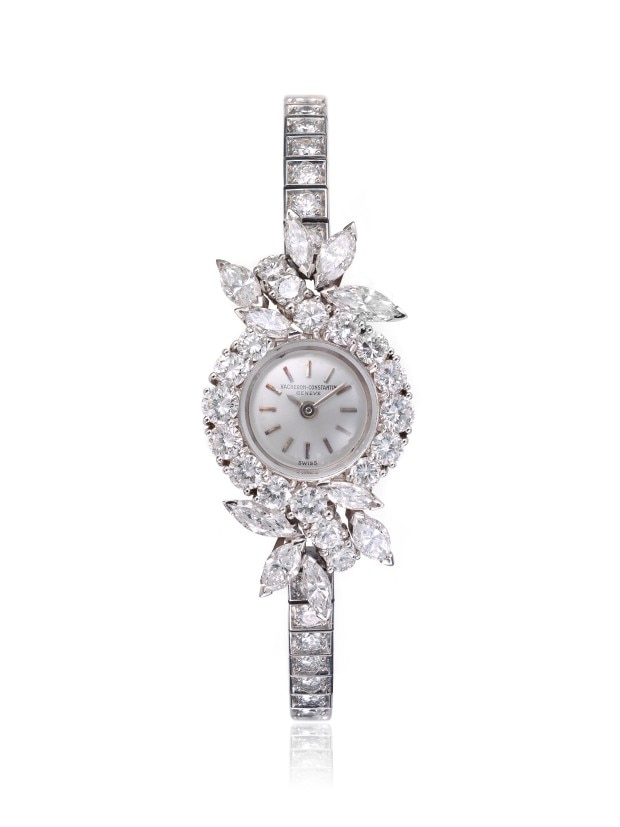
Gemsetting
Gemsetting involves drilling a seat into the underlying material, adjusting it to the stone it will receive and securing the latter in place. The gemsetting technique – bead setting, bezel setting, prong setting, channel setting, snow setting, invisible setting – varies according to the desired aesthetic.
The ‘gala dress’ jewellery timepiece features a bezel of 18 brilliant-cut, ten marquise-cut diamonds in a delightful floral pattern and a slender bracelet, set with 40 brilliant-cut diamonds.
Gem-set white gold jewellery watch with integrated bracelet, sunburst silver-toned white gold dial – 1964
A pioneering spirit open to myriad ideas
In parallel with its international expansion, the Maison has made every effort to embrace diverse cultures, lifestyles and traditions. This open-minded approach is reflected in timepieces that capture key stylistic trends as well as techniques specific to the decorative arts and their history on various continents.
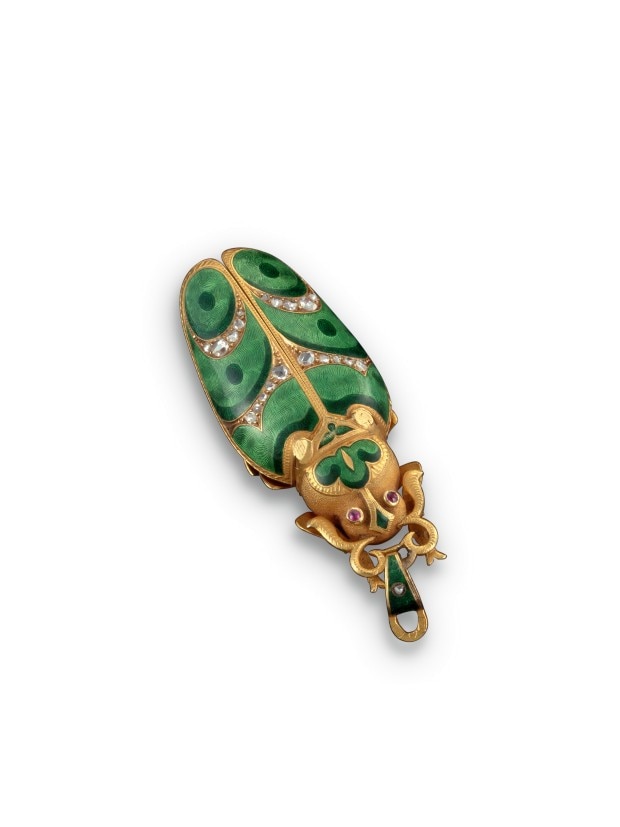
A creative vision
Vacheron Constantin has expressed its openness to the world and its variety through the creation of exceptional, artistically crafted timepieces.
Designed as a pendant, this secret jewellery watch is among the rare ‘scarab beetle’ models from Vacheron Constantin. Two black and green enamelled wings, set with rosette diamonds, open to reveal a white enamel dial with a chased and engraved pattern that extends onto the caseband that forms the insect’s body.
‘Scarab beetle’ pendant watch in yellow gold, enamelled and set with diamonds and rubies, enamel dial – 1910
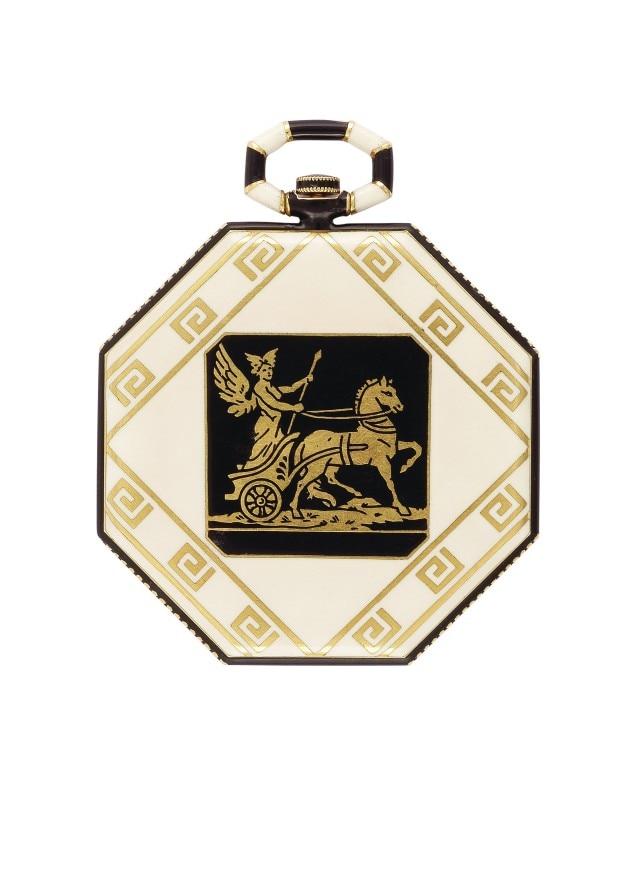
A horological Odyssey
The Maison’s philosophy contributed to providing a rich field of expression for craftsmen who draw inspiration from history, artistic practice and culture.
This timepiece was created in 1921 in collaboration with Verger Frères. The Art-Deco style ornamentation features a Grand Feu enamel depiction of a winged deity driving a chariot surrounded by a frieze of Greek-key motifs on an eggshell-coloured background.
Yellow gold octagonal pocket watch in yellow gold, silver-toned dial – 1921
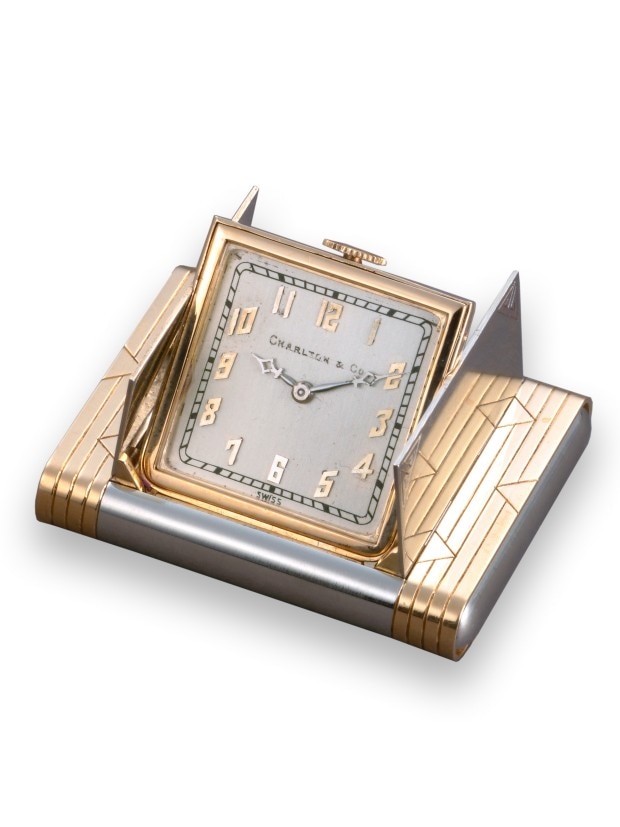
A taste for travel
The Roaring Twenties brought a desire for new horizons. Transatlantic liners and exotic destinations held magical allure. Travel watches became must-have objects – and Vacheron Constantin rose to the challenge.
This model decorated with geometric motifs in an Art Deco spirit is a classic example of the ‘surprise’ watch, very useful for travellers. The Maison collaborated with Verger Frères, renowned for its creativity in the realm of watch decoration. The result is an extremely slim watch with a 9’’’94 movement, protected by a case with movable flaps (shutters) nicknamed “La Captive.”
Yellow and white gold shutter-type table watch, silver-toned dial – 1929
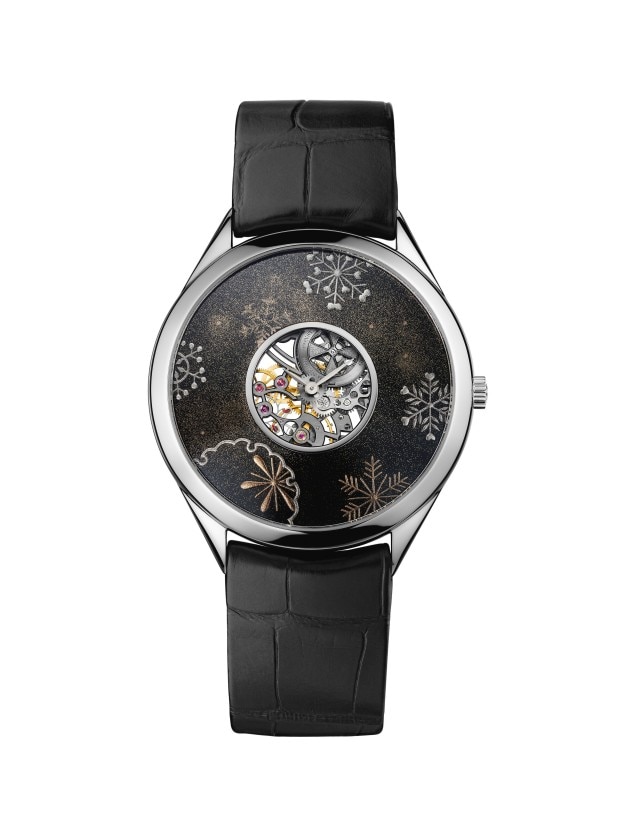
A commitment to art and culture
The ‘Métiers d'Art’ collections express Vacheron Constantin's attachment to art and culture throughout the world and across history.
This series of watches pays tribute to the venerable Japanese art of ‘maki-e’, in which gold or silver powder is sprinkled on a black lacquer background to create traditional motifs, a very delicate process. Produced in three series between 2010 and 2014, the most recent is dedicated to the natural beauty of the seasons.
Métiers d'Art - La symbolique des laques - "Hanami Tsukimi Yukimi" white gold watch, openworked and Maki-e lacquered dial – 2014
At the leading edge of watchmaking
Driven by the quest for precision, Vacheron Constantin has pushed the boundaries of horological complications time and again. For over two centuries, the Maison has explored all aspects of watchmaking, from tourbillon regulators to astronomical displays; from chiming watches to chronographs.
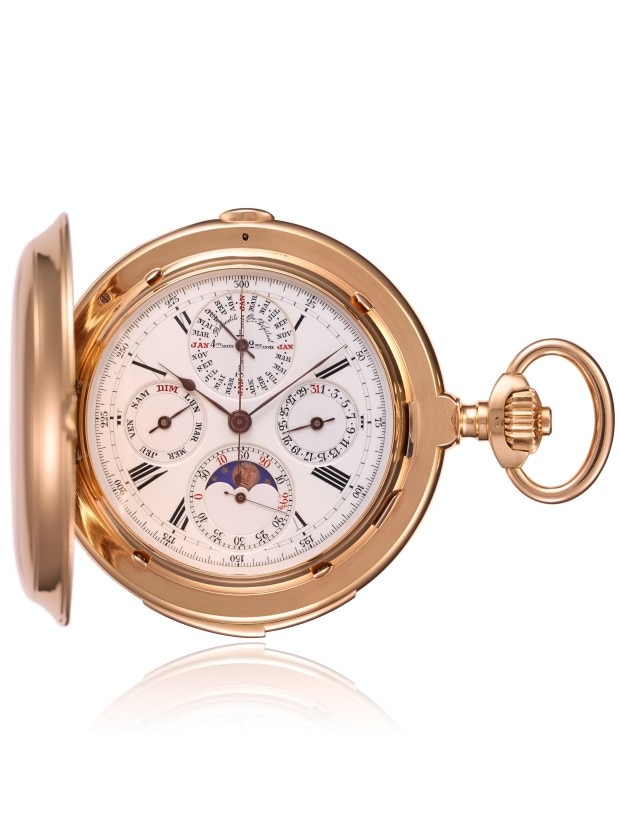
Astronomy
At the dawn of the 20th century, Grand Complication watches became very popular amongst collectors. As one of the few Manufactures to have a workshop dedicated to highly complicated made-to-order pocket watches, Vacheron Constantin enjoyed a horological golden age.
It was during this period that the Maison produced notable timepieces such as this hunter-type watch featuring a monopusher chronograph with a tachymeter scale, astronomical perpetual calendar and minute repeater.
Hunter-type pink gold pocket watch with minute repeater, chronograph and perpetual calendar, enamel dial – 1901
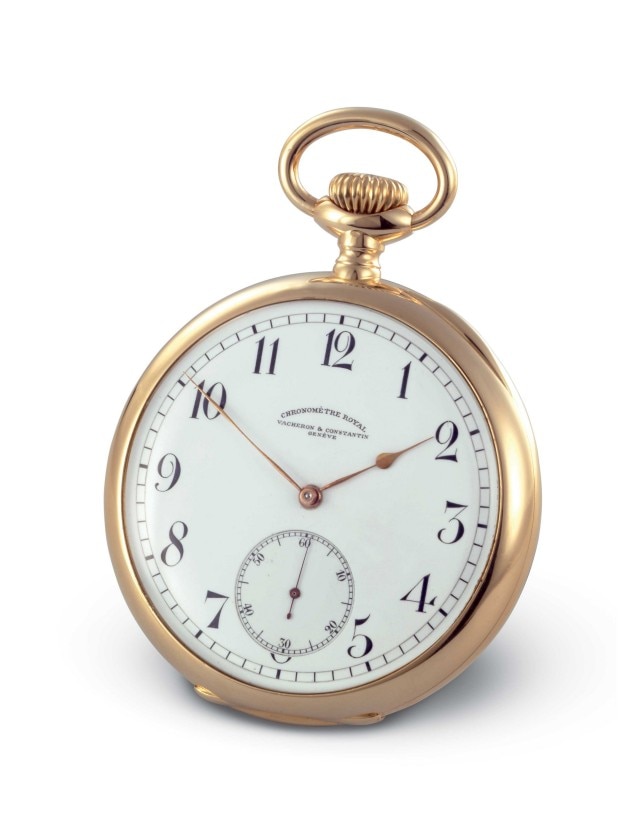
Chronometers
Building on a reputation for chronometry acquired thanks to numerous watchmaking prizes, the Maison decided to launch a range of such timepieces for everyday use.
The Chronomètre Royal was born in 1907, when the Maison introduced this highly accurate pocket watch and trademarked the name. Originally designed to withstand the climatic constraints of South America, early models featured a robust, water-resistant case to protect the movement from dust and humidity.
"Chronomètre Royal" yellow gold pocket watch, enamel dial – 1907
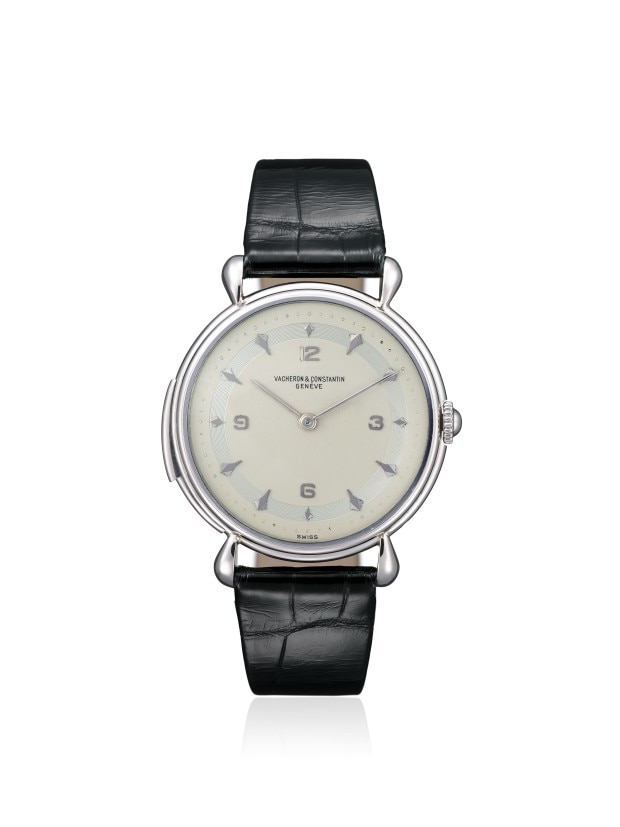
Chiming watches
Minute-repeater watches are in a class of their own in the world of watchmaking, leveraging both mechanical and musical expertise to deliver auditory clarity and precision. Throughout the 20th century, Vacheron Constantin created models featuring this prestigious yet challenging complication, often with the added constraint of being ultra-thin.
This 37 mm platinum watch is a masterpiece, combining elegant form and a rich, resonant 13’’’ JMV calibre measuring barely 3.25 mm thick.
Platinum minute-repeater watch, silver-toned dial – 1955

Ultra-flat watchmaking
Extreme thinness is not traditionally regarded as a complication per se, since it adds no additional function. It does, however, involve a certain degree of complexity. The 20th century is considered the golden age of ultra-slim timepieces, with the rise of wristwatches.
This ultra-thin model is the pocket-watch version of the one nicknamed ‘Disco Volante’ by Italian collectors. Notable for its bevelled caseband, aka ‘knife-shaped case middle,’ it was designed to highlight the slender profile enabled by the Calibre 1003.
‘Disco Volante’ yellow gold pocket watch, sunburst gilt dial – 1959

Chronographs
From the early 19th century onwards, demand for watches incorporating accurate short-time measurements, initially for astronomical observations, evolved rapidly, thanks to aviation, military contexts and sports competitions. Vacheron Constantin participated fully in these developments, listing its first chronograph in 1874.
This bicompax chronograph featuring a silver-toned dial with tachymeter and telemeter scales is remarkable for its balanced proportions and perfect symmetry. It is equipped with the Calibre 492, a column-wheel movement renowned for its reliability and accuracy.
Yellow gold chronograph watch, sunburst satin-brushed silver-toned dial – 1967
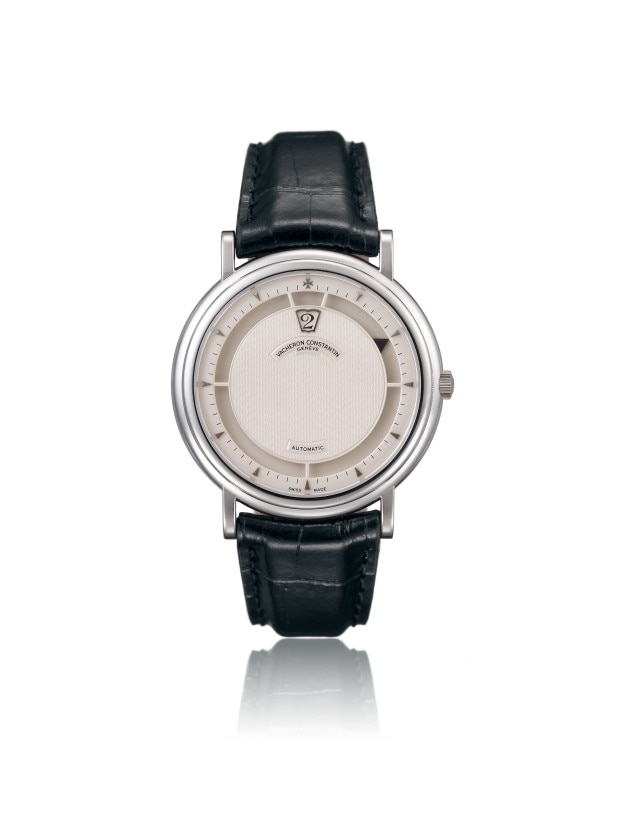
Special displays
The Maison’s quest for technical mastery and aesthetics drives endless experimentation. Vacheron Constantin began designing pocket watches with jumping displays in the early 19th century, notably the “aperture-type”, where hours are indicated by a disc at 12 o'clock whose units shift incrementally. Later came watches with retrograde displays, so named because the indicator snaps back after completion instead of circling the dial.
The “jumping hour” complication may be paired with a “mysterious” minutes display, as on this model 43040 from 1995, directly inspired by timepieces from the 1920s.
Jumping-hour wristwatch with mysterious minutes display, in platinum, silver-toned guilloché dial, 1995
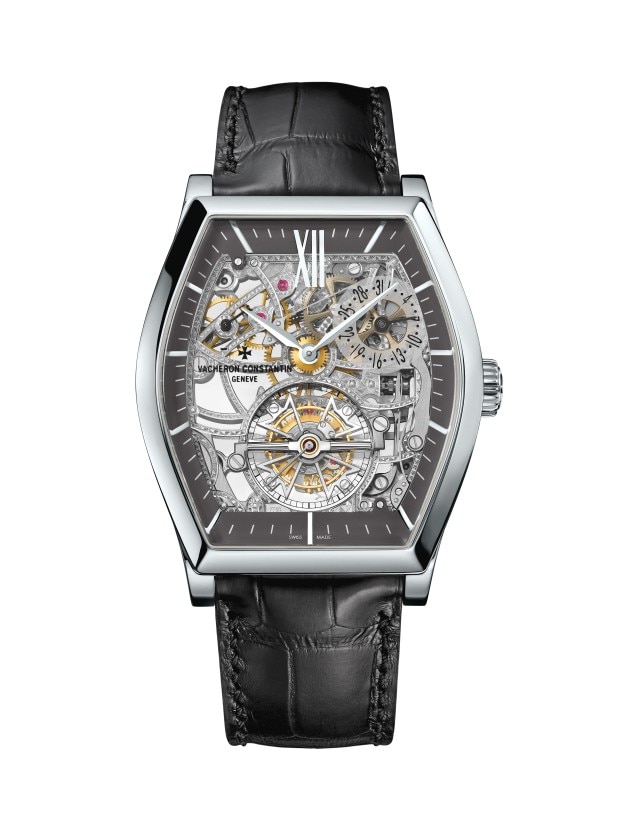
Tourbillons
Developed in the 18th century, the tourbillon was an invaluable solution for pocket watches, worn vertically in a pocket during the day and placed horizontally on a table at night. It relies on a carriage housing the two key components of a mechanical watch: the escapement and balance-spring. Revolving on its axis, the carriage serves as a fourth (seconds) wheel, compensating for the pull of gravity on the balance wheel.
Two centuries later, Vacheron Constantin paired the tonneau shape of its ‘Malte’ collection with such movements, as witness this platinum watch with a sapphire dial showcasing a fully decorated skeletonised complication movement.
Malte tonneau-shaped skeleton tourbillon watch in platinum, engraved movement, power-reserve indicator – 2014
The quest
In 1755, in Geneva, Jean-Marc Vacheron embarked on the first chapter of a story that has become a remarkable human adventure – a quest for excellence passed down from generation to generation for centuries.






